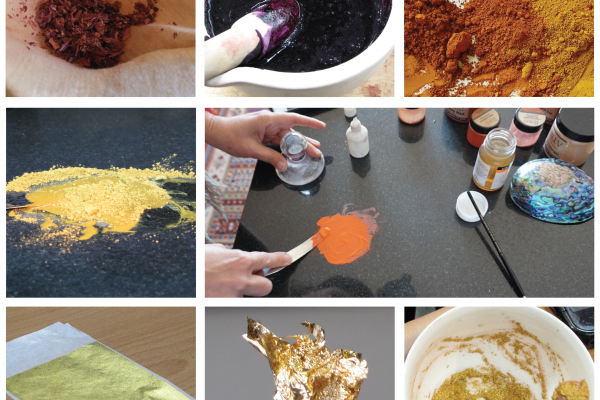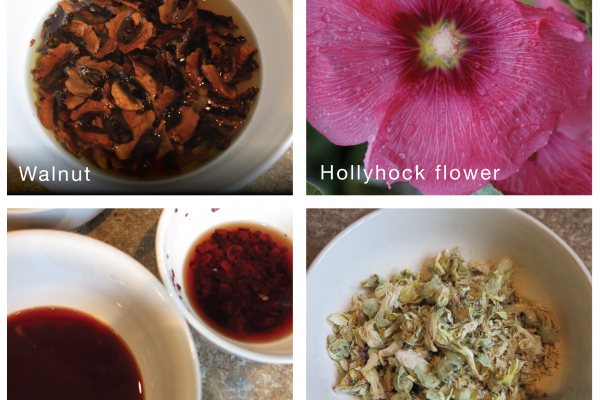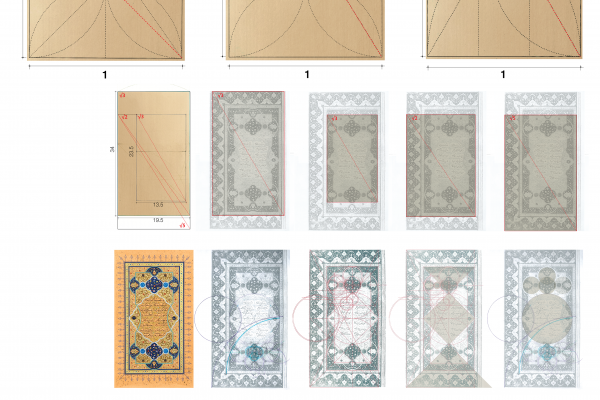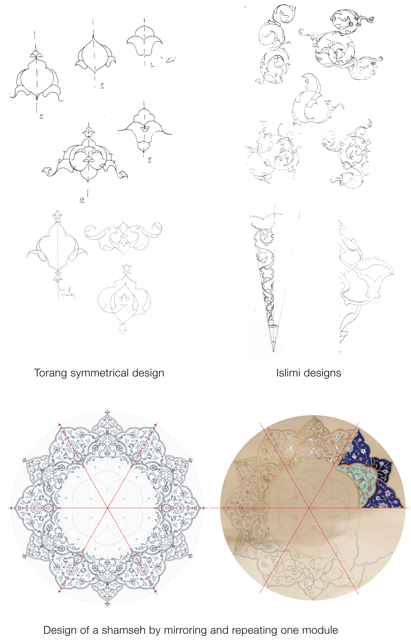
The palette for my illuminations are natural pigments sourced from rocks, earth, metals, plants and insects. I grind these and bind them in gum arabic before suspending in water.
I don’t use any synthetic materials. My blues are lapis, greens of malachite, yellows from ochres and reds are vermilion. Blacks are carbon and white from lead. My shell gold is powdered from leaf and bound by gum arabic.

My papers are sized with dried hollyhock flowers, which is an ancient Persian technique for reducing porosity that lends smoothness to the surface.
I travelled to Esfahan to collect the dried skins of nuts, fruits, vegetables and herbs so that my illuminations could rise from earth-toned pages.

The selected couplets from the Haft Paykar scroll across each illumination with the natural flow of Nas’taliq calligraphy, the exemplar for Persian manuscripts since the fourteenth century.
Individual letters in Nas’taliq script often contour nature in a poetic allegory of words in the couplet itself, thus lending this style to the romantic tales of the famous Persian poets.
I inscribed Nizami’s words with a hand-carved reed pen dipped in black or walnut ink and burnished each page with agate, hoping that these traditional methods would somehow help capture the timeless message of divine love in the poetry.

These folios follow the spirit of traditional Persian manuscrip t design, where each story unfolds with pr ecise geometrical attention to everything in the composition. That geometrical discipline begi ns with the framing of the narrative and its bor ders; my illuminations draw on the sacred proportions of the roots of squares that define margins and frame the arcs of activity in each story.
The frontispiece for the Haft Paykar is derived from my geometrical analyses of a Divan Shams folio held at The British Library. That geometry governs the harmony of this design and projects a cosmic gateway to Nizami’s eternal
narrative.
Within each of my folios ther e are hidden symmetries that arise fr om the foundation of squares, which when examined closely dir ect the eye to the narrative action between Bahrâm and his bride and the placement of key elements such as the fountains. I was really surprised how often my choices for each composition met the requirements for an underlying geometry I had not designed, as if my hand was guided by an exter nal force.

Traditional Persian manuscript illustrations emerge from a tapestry of friezes and motifs that are rooted in shapes that derive their form from nature. These floral patterns mirror the order, balance and repetition
we so often see in nature, where if we look closely we see cells or other organic compounds grow through seemingly endless whirls or spirals of the same structure. Illustrators have long understood their craft’s relationship with the harmony of nature and in my work I weave motifs so that they radiate along spiral paths, structured so that their symmetry lends rhythm and balance to the folio without distraction.